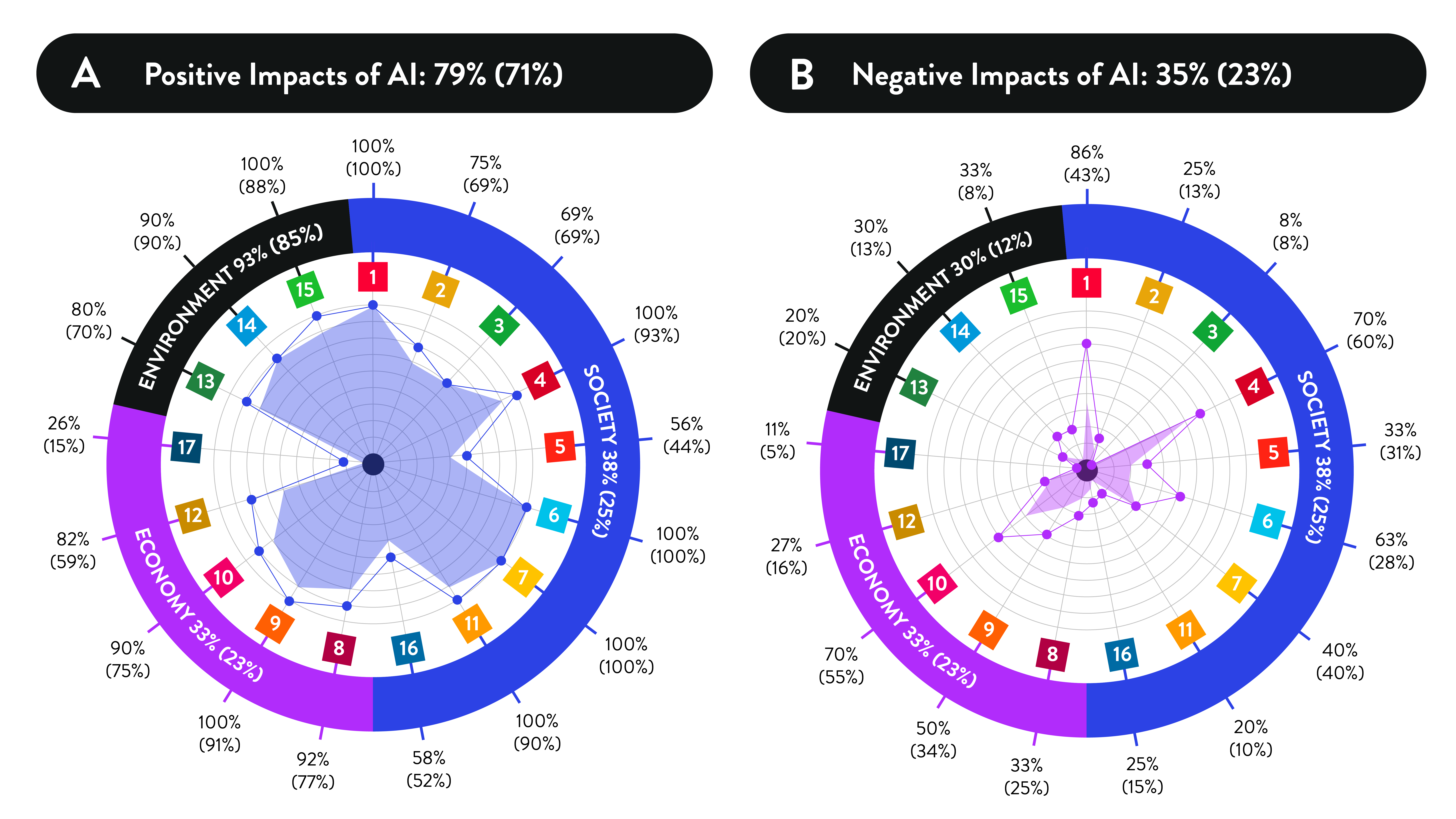AI and the Sustainable Development Goals
5.4 Summary of positive and negative impacts of AI
Here we can see the potential of AI acting as (a) an enabler or (b) an inhibitor on each of the SDGs.

Figure 1. Panel (a) shows the results of the analysis of AI acting as a potential enabler, while panel (b) shows the potential of AI acting as an inhibitor on each of the SDGs. The numbers inside the coloured squares represent each corresponding SDG. The percentages on the outside show the proportion of each of the SDG targets potentially affected by AI. The percentages in the inner circle correspond to proportions of the three thematic groups of SDG: Society, Economy, and Environment.
Derived from Vinuesa, R., Azizpour, H., Leite, I. et al. The role of artificial intelligence in achieving the Sustainable Development Goals. Nat Commun 11, 233 (2020) CC BY 4.0
As shown in Figure 1, the results of the authors’ analysis are split into three main groups as depicted in the outermost circle:
- Society
- Economy
- Environment.
Vinuesa et al’s evaluation shows that AI may act as an enabler on 134 targets (79%) across all SDGs, for the most part through some kind of technological improvement that might enable overcoming some present limitations. However, 59 targets (35%, also across all SDGs) might experience a negative impact.
Group activity: Positive and negative effects of AI
Pick one of the three main groups of SDGs - Society, Economy, and Environment - that most closely aligns with your own interests.
- List some of the possible positive and negative effects of AI on your chosen SDG group.
Post your thoughts in the AI and the Sustainable Development Goals forum to discuss with your classmates and tutor.
In the next three sections we’ll take a closer look at what the study revealed in each of these main groups – Society, Economy and Environment – starting with the Society group of sustainable development goals.